Design patterns to indicate status on infinite scroll pages

There are several questions regarding design patterns that apply to infinite scroll such as What’s the design pattern at the end of infinite scroll? and also What are best mobile navigation practices for infinite scrolling pages with a deep hierarchy?
However, my question specifically applies to design patterns that help indicate where the user is currently located within an infinite scroll section of a page, which is often simply handled by the same page scroll bar. While this is a solution to the design pattern, it exists by default and isn’t designed specifically to handle this issue.
There are also instances of two scroll bars on the same page, which causes some confusion with users, not the least of which exists on the mobile page views of having to manipulate two scroll bars in a very limited space.
Are there good examples of how infinite page scrolls are handles in a web or mobile application that provides clear indication of where the user is currently located and allows then to navigate the content?
share this post : )
Why We Unfairly Judge Other Designers

In design circles, we’re quick to judge others in our profession. It’s incredibly easy to glance at another’s work and call it “crap.” But are we judging fairly?
The post Why We Unfairly Judge Other Designers appeared first on Speckyboy Design Magazine.
share this post : )
Best practices or patterns for "Saved Search" and "Edit Saved Search"?

I have been tasked with redesigning our saved search function, as it has been deemed confusing (and I can’t find another site that works like ours does currently). Are there any standard ways of handling both Saving a search and then allow…
share this post : )
Cursor usage in different application elements

I am working on an application that is mostly used by desktop users. So I am trying to perfect the use of the cursor css-rules.
First of all, I have read and try to follow the practice of having pointer-cursor only for external (href) lin…
share this post : )
General design principle to assist functionality but be out of your way

I don’t have the language to even ask this question appropriately. I am designing a spec for a design of a UI that will assist the functionality of another device. I’d like to state in words that a design goal of this application in genera…
share this post : )
Displaying Continuous and Discrete Time Series Data

I have an existing analysis tool which compares two datasets:
An Input message log
An output message log
The tool compares the differences between the two sets by looking at:
The number of each type of message
The time each message c…
share this post : )
Responsive UI Pattern for selecting from a list of exact values greater than 5?

I’m designing a page where users should be able to sort between exercise videos categorized by “phase.” (see image). These phases start with “Pre-Op” then proceed linearly 1, 2, 3, etc. Since these phases can exceed 4 or 5, i’m hesitant to…
share this post : )
How to show a segmented control and multiselect buttongroup at top of a list

I’m struggling on how I can present the following to my users and that they understand how it works:
In a desktop app, we have a ‘Recent’ phonecalls list. This list shows all calls that came in and went out. A user is able to see just his…
share this post : )
Best place for notification preferences

Today I am working on a new feature inside our web app to allow users to set up their notification preferences. However, I am struggling to find an appropriate place to include this feature, which will be sent out by email.
The feature i…
share this post : )
On macOS, why does closing windows not quit the app?

I’m on macOS and I’m trying to understand the usability decisions behind the close action on some application windows. I have just started terminal:
Nothing to see here of relevance: terminal has been opened, and it’s clear in the botto…
